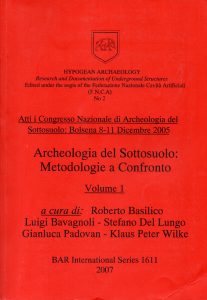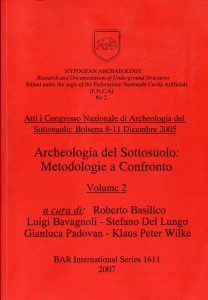LE OPERE IDRAULICHE SOTTERRANEE DI ANCONA
LE OPERE IDRAULICHE SOTTERRANEE DI ANCONA
Autori Giuseppe Antonini, Maurizio Mainiero e Alberto Recanatini
Sommario L’incarico conferito nel 2002 dal comune di Ancona agli autori della presente relazione ha permesso di rilevare e studiare l’intera rete idrica del sottosuolo cittadino. Il lavoro si è concluso nel 2003 con una dettagliata documentazione tecnica, fotografica e storica conferita in un convegno tenuto nell’aula del Rettorato dell’Università di Ancona il 29 maggio 2004 ed in una mostra tenuta nei giorni 24 – 29 maggio 2004, successivamente ripetuta in modo itinerante ed attualmente allestita in modo permanente nelle cisterne della fonte del Calamo. Sono stati individuati due percorsi idraulici articolati uno a quota superiore che si ritiene rifornisse in tempi più remoti il nucleo della città antica sui colli Cardeto, Cappuccini e Guasco ed un altro percorso sotterraneo, anch’esso antico ma con riferimenti ottocenteschi, che percorre la ex Piana degli Orti, la preesistente valle Pennocchiara fino alle grandi cisterne sottostanti l’attuale piazza Stamira e raggiunge l’area portuale. Entrambi i rami idraulici sono alimentati dall’antico acquedotto di Santa Margherita probabilmente collegato a cunicoli della stessa natura individuati alle falde del Conero.
Abstract The assignment given in 2002 by the Ancona Town Council to the authors of this report made it possible to survey and study the whole underground waterworks of the town. The work ended in 2003 with the presentation of some detailed technical, photographic and historic records at a conference held at the University Rector’s Hall on 29th May 2004 and at an exhibition held on 24th – 29th May 2004, later moved on an itinerant basis and now become permanent in the ancient cisterns of the Calamo fountain-head (“Fonte del Calamo”). Two water pathways have been identified: an upper one, probably supplying the old town core on the Cardeto, Cappuccini and Guasco hills in earlier times, and a lower underground one, just as old, but with some nineteenth-century evidence, which runs through the old Gardens Plain (“Piana degli Orti”) and the pre-existing Pennocchiara valley up to the big cisterns underlying the present Stamira Square and finally reaches the harbour area. Both hydraulic arms are fed by the ancient Santa Margherita waterworks probably linked to underground tunnels of the same kind identified at the foot of the Conero mountain.
12 OPERE IDRAULICHE SOTTERRANEE DI ANCONA
12 OPERE IDRAULICHE SOTTERRANEE FOTO

